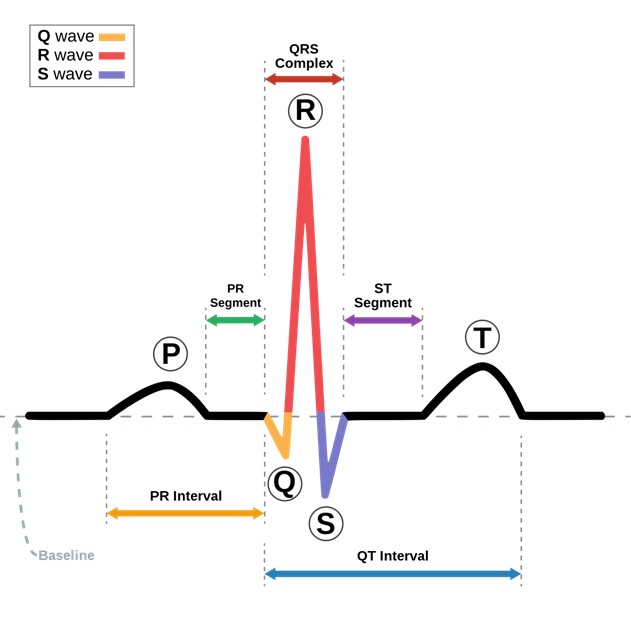The complex (wave) represents the sum of all ventricular muscle cell depolarizations
The Correct Answer is {"dropdown-group-1":"B"}

PR interval: the time it takes for the electrical impulse to travel from the sinoatrial (SA) node to the atrioventricular (AV) node
QT interval: the time it takes for ventricular depolarization and repolarization to occur
ST segment: the period between ventricular depolarization and repolarization, representing the plateau phase of the ventricular action potential.
Nursing Test Bank
Naxlex Comprehensive Predictor Exams
Related Questions
Correct Answer is B
Explanation
IgE is the immunoglobulin associated with allergic reactions and is often elevated in patients with asthma. When a person with asthma is exposed to an allergen, their IgE levels increase, leading to the release of inflammatory chemicals such as histamine, which can cause bronchoconstriction and other symptoms of asthma.
IgA: This is an immunoglobulin that plays a role in the immune system's defense against infections. It is mainly found in the mucous membranes of the respiratory and gastrointestinal tracts.
IgG: This is the most abundant immunoglobulin in the bloodstream and plays a role in providing immunity against bacterial and viral infections. It can also cross the placenta and provide passive immunity to a developing fetus.
IgM: This is the first immunoglobulin produced in response to an infection and plays a role in the body's defense against bacterial and viral infections. It is found primarily in the bloodstream.
Correct Answer is C
Explanation
Orthostatic hypotension is a drop in blood pressure that occurs when a person stands up from a sitting or lying down position. To check for orthostatic hypotension, the nurse typically takes the patient's blood pressure and heart rate while the patient is lying down, then has the patient stand up for a few minutes and takes the blood pressure and heart rate again. If the blood pressure drops significantly (usually a drop of 20 mm Hg or more) and the heart rate increases, it may indicate orthostatic hypotension.
Whether you are a student looking to ace your exams or a practicing nurse seeking to enhance your expertise , our nursing education contents will empower you with the confidence and competence to make a difference in the lives of patients and become a respected leader in the healthcare field.
Visit Naxlex, invest in your future and unlock endless possibilities with our unparalleled nursing education contents today
Report Wrong Answer on the Current Question
Do you disagree with the answer? If yes, what is your expected answer? Explain.
Kindly be descriptive with the issue you are facing.
